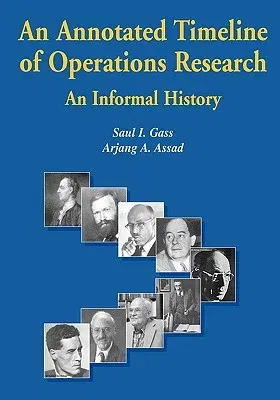Saul I Gass
(Author)An Annotated Timeline of Operations Research: An Informal History (Corrected 2005. Corr. 2nd Printing 2006)Paperback - Corrected 2005. Corr. 2nd Printing 2006, 7 January 2005

Qty
1
Turbo
Ships in 2 - 3 days
In Stock
Free Delivery
Cash on Delivery
15 Days
Free Returns
Secure Checkout
Part of Series
International Operations Research & Management Science
Part of Series
International Series in Operations Research & Management Science
Part of Series
International Series in Operations Research and Management S
Print Length
213 pages
Language
English
Publisher
Springer
Date Published
7 Jan 2005
ISBN-10
1402081162
ISBN-13
9781402081163
Description
Product Details
Authors:
Book Edition:
Corrected 2005. Corr. 2nd Printing 2006
Book Format:
Paperback
Country of Origin:
US
Date Published:
7 January 2005
Dimensions:
25.55 x
17.42 x
0.48 cm
ISBN-10:
1402081162
ISBN-13:
9781402081163
Language:
English
Location:
New York, NY
Pages:
213
Publisher:
Series:
Weight:
489.88 gm

